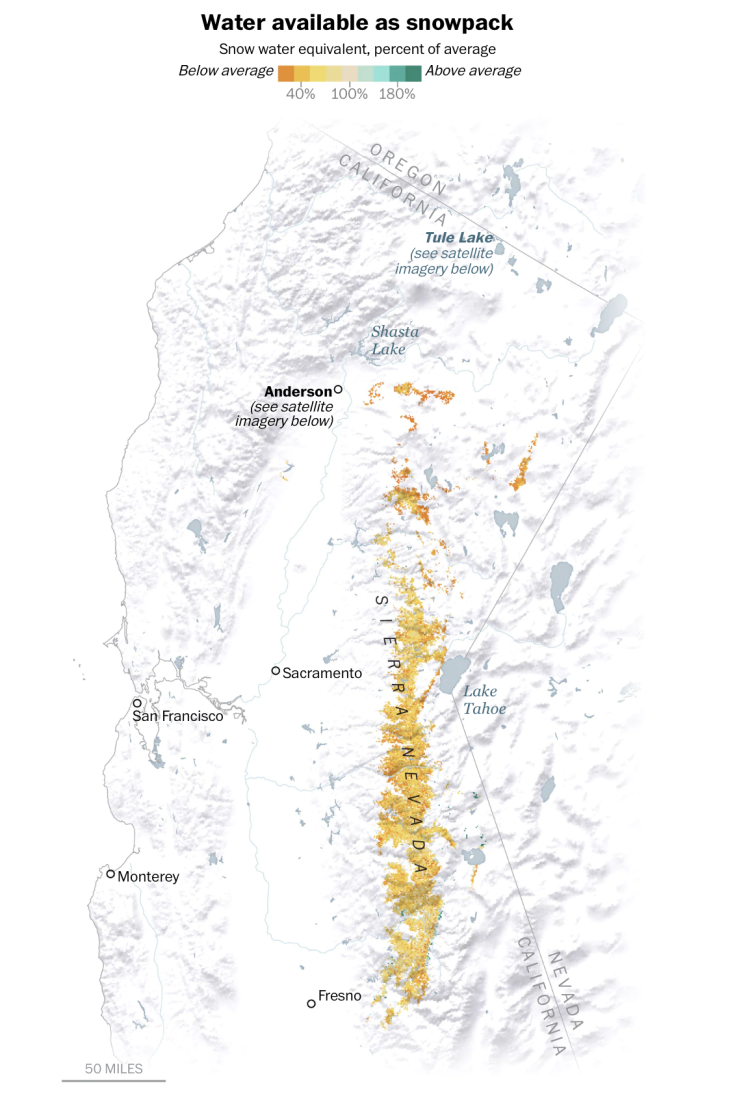
Noah Molotch, associate professor of Geography, and INSTAAR hydrologist with a joint appointment at NASA’s Jet Propulsion Laboratory, and CU-Boulder colleague Leanne Lestak have been using 20 years of satellite data of snow-covered area, along with the SNOTEL data, to generate close to real-time estimates of snow water equivalent for use by the U.S. Bureau of Reclamation. Their modeling effort can fill the gaps that ground monitoring doesn’t cover, particularly at certain elevations. In a series of interviews with the Washington Post and NASA, Molotch said:
“Snowpack in the Sierra is an important water resource for California, supplying around one-third of the state’s freshwater supply. Winter storms typically bring generous amounts of snow, which melt as temperatures rise in April. The meltwater runoff helps replenish rivers, reservoirs and groundwater.
Because of a historically dry winter, the statewide snowpack stood at 38 percent of its average at the end of the season on April 1. The little snowpack that accumulated in the southern Sierra had fully melted by May 24, leaving no additional freshwater supply for the hot months ahead.”
“The map above shows the snow water equivalent for the Sierra Nevada, or how much liquid water was contained in the snowpack on April 1 this year compared to its 20-year average. The data, modeled weekly by the University of Colorado’s Institute of Arctic and Alpine Research, is used by water forecasters, managers, irrigators, public utilities and many other parties.”
““What matters most is how much snow is on the ground on April 1st, because that’s really the indicator of the total amount of snow that accumulated for the whole winter,” said Noah P. Molotch, a hydrologist with the monitoring project and a professor at the University of Colorado at Boulder. This year’s depletion of the snowpack followed lackluster winters in 2020 and 2021, making this the third dry year in a row for California.”
“Molotch said 2022’s winter snow is likely to rank among the smallest five annual snowpacks since 2000. The lowest snowpack occurred in 2015, when accumulation was less than 10 percent of the average. California has not fully recovered from 2015, Molotch said.”
